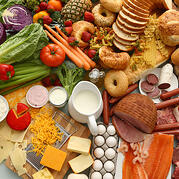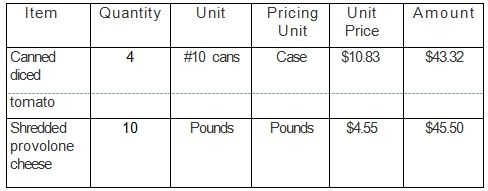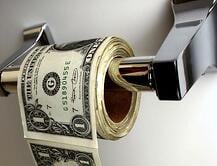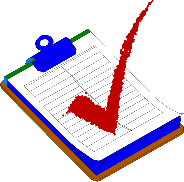 By Douglas R. BrownAtlantic Publishing
By Douglas R. BrownAtlantic Publishing
Part 3: Purchasing Ideas
There are many ways to curb cost. Here are a few ideas:
- Inexpensive fish. Turn your customers on to seafood alternatives and lower your food cost. Consider using some alternatives such as Tilapia, farm-raised salmon, fresh-water perch, Alaskan halibut, mahi-mahi, shark or skate. Skate, for example, can be purchased wholesale right now online for $1.62 per pound. The secret, of course, is to make certain it is fresh.
- Shelled eggs. Consider buying shelled eggs if your restaurant uses more than three cases of eggs per week. This will reduce the amount of cardboard and other packaging that must be disposed or recycled. Shelled eggs are often packaged in 5-gallon buckets that can later be reused for cleaning or maintenance.
- Condiments. Use refillable condiment dispensers instead of individual condiment packets for dine-in customers.
- Cost-Watch Web site. This site, www.cost-watch.com, helps restaurant management control labor, utility and food and beverage costs. It also offers regional reports to compare expenses and food costs in similar restaurants as well as price trend forecasts. It is a great resource for purchasing managers.
- Join a barter club. Bartering allows you to buy what you need and pay for it with otherwise unsold products, such as food and beverages or even catering services. Almost anything and everything can be purchased with barter services. Nationally, over 250,000 businesses are involved in barter. Check out these Web pages:
www.barterbrokers.com
www.netlabs.net/biz/itex/index.htm
- Similar ingredients. Include menu items that are essentially made with similar ingredients as others on the menu. For example, a shrimp cocktail and shrimp pasta are two very different meals, but the ingredients are similar. These ingredients are simple, inexpensive and don't take up a lot of storage space. Having five or six other pasta sauces to offer also loads up your menu with choices without excessively increasing your inventory. This will not only allow you to buy in bulk and keep costs down, but will also lighten the load on your kitchen staff.
- Bread baskets. The potential for waste in bread baskets is large. Most of these come back from the table partially eaten at best. You may want to consider giving bread baskets only if requested or you may want to cut down on the amount served. You should also consider including packaged items since these can be reused. Some operators are now serving bread only by request or they are serving one roll or breadstick at a time from a breadbasket with tongs.
- Substitute premade items. Substitute premade items for some items you have been making from scratch. You don't have to sacrifice quality to do this; many premade items are good. You can also start with a premade item and add ingredients. For instance, you can buy a premade salad dressing and add blue cheese or fresh herbs. Using these items will lower your food and labor costs, and you can still put out a quality item.







